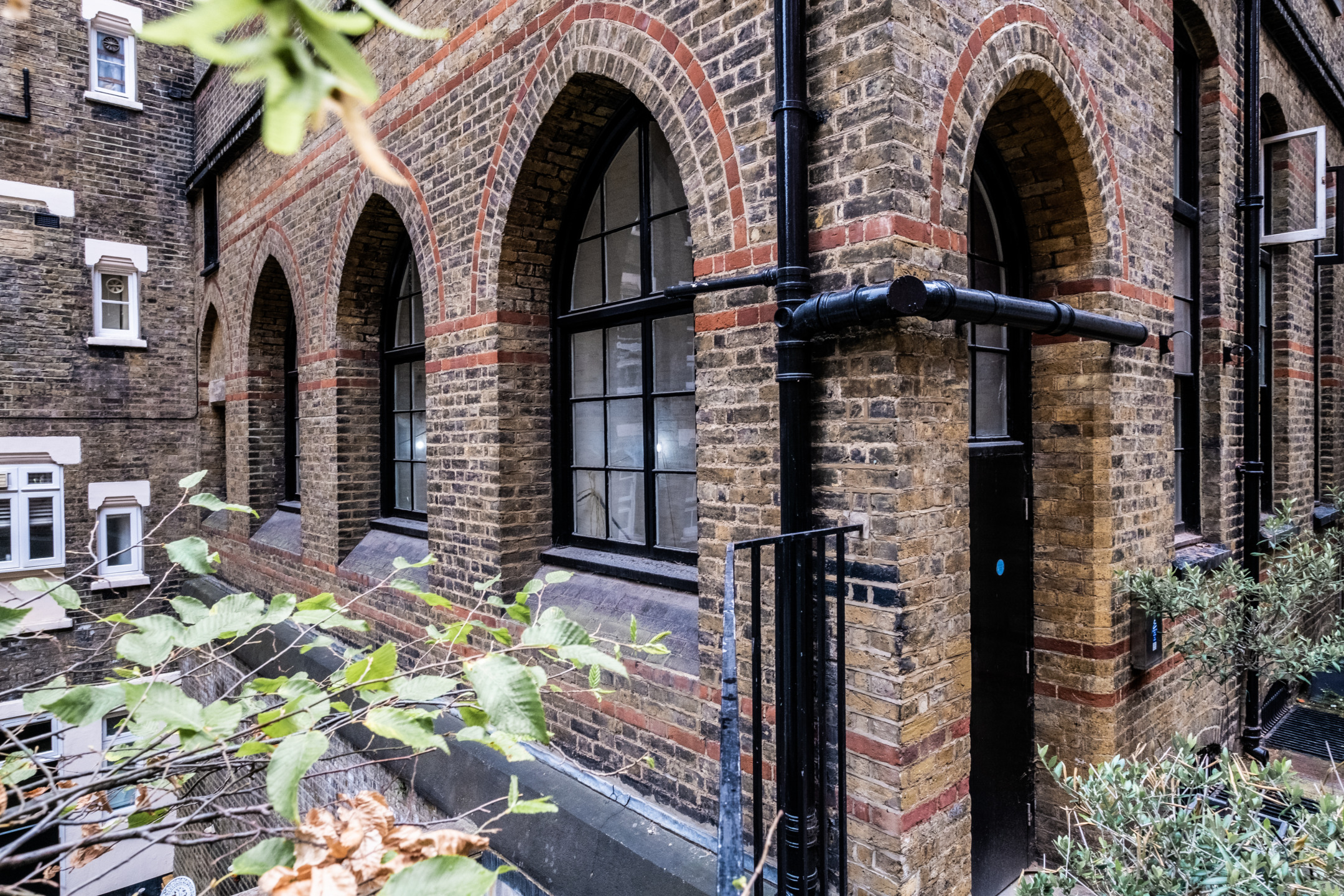Sarah Myerscough Transforms a 1920s Victorian Building into a Haven for Art and Craft
In London's Mayfair, the gallerist opens The Schoolhouse, a space dedicated to showcasing artisan work

Just over a year ago, Sarah Myerscough signed a lease on a three-story Victorian building just a few minutes walk from Selfridges. Empty for more than a decade, and in a dilapidated state, it had been many things in its 100 year life: a schoolhouse, a soup kitchen, a mothers’ meeting hall, a part of Central London Polytechnic.
“How can you turn your back on a building like that?” says Myerscough, who in spite of decaying false walls, and mezzanines that cut floor-to-ceiling windows in half, saw the beauty of the building designed by John Peter Gandy in 1925 in the Greek Revival style. “I thought, how can I possibly make all this into a gallery? But I had absolutely fallen in love with it too.”



Last week, a crowd thronged its newly appointed interior, for the opening party. They took in two solo exhibitions of new work, one by the wood master Ernst Gamperl and Frances Pinnock who works with leather to create mysterious anthropomorphic sculpture. Britain’s much-loved cookery writer Nigel Slater–a keen collector of craft–was there. Bettina Bryant, the wine-world doyenne with an estate in Napa Valley, had flown in from California. Apart from the work, they admired the interior where original encaustic tiles, cast-iron coal chutes and old gas-light fittings had been discovered and restored during the building’s rehabilitation by young London architects CarverHaggard. New stairs had been created using mahogany recovered from a 1960s extension. “I wanted to keep it authentic, to hold on to the Victorian history,” says Myerscough. “This isn’t the ultra glossy side of Mayfair. It’s a bit more gritty, a bit more unexpected.”


The 14 new pieces by Ernst Gamperl on the first floor are the product of three years virtuosic wrangling: a series of vessels and sculptures finished and scored in unique ways that Gamperl has taken years to finesse. The German artist treats wood like ceramic, applying ferrous oxide and iron filings to create extraordinary surfaces. “He has big vats of vinegar so he can immerse an entire piece,” says Myerscough, who works closely with her artists as a creative director. “Unlike fine artists, they welcome creative exchange and collaboration.”
Myerscough began her career in the art and photographic world, pivoting to craft around 2009. Gamperl was one of the first makers she represented; he was also the winner of the first Loewe Foundation Craft Prize in 2017. “There have been subtle changes in his work. I see it as a lovely long slow journey of learning,” says Myerscough. “And for me, he represents the very essence of the gallery’s aesthetic.” That could be best described as a luxurious and contemporary take on traditional craftsmanship. “He had to be part of the building’s inauguration.”


Pinnock’s work, on the floor above, is seven sewn-leather totemic sculptures, that she describes as “the strange choreographies of everyday life”. One is called “Dress for the job you want.” They are vulnerable self-portraits, of her fears and emotions, as well as her technical training. “She’s an artist who is just starting out,” says Myerscough of the twenty-something, who has an MA in Sculpture from the Royal College of Art and also trained as a shoemaker. “There’s something about the stitch work–it feels very physical and soulful.”
Myerscough has ushered the careers of many artists now, respecting the most traditional of techniques alongside new technologies that enable radical possibilities. She has fostered long relationships—with the American Christopher Kurtz, for example, who carves and slices wood until it appears to fold gently like textile; or the English Gareth Neal who switches between craft and tech, transforming hefty unloved blocks of wood into robust seating using digital milling; or 3D printing 6 foot tall vases in sand.
Meanwhile, her building also contains 2,000 square feet of space for education and development, under the banner Crafted Arts Foundation, to create a critical and creative infrastructure. “The name is important,” says Myerscough. “I hope it distinguishes what we are trying to do here, and our values.”
As such, Myerscough is advocating for craft that relies on tradition and virtuosity, but without any fusty or pious undertones. It must address the future too. “You have to keep pushing forward, to be adaptive,” she says. Her fashion choices—hyper-stylish Issey Miyake—certainly conform to that view. “Why can’t craft be sexy and cool?” she asks. Why not indeed.
The Schoolhouse, 18 Balderton Street, London W1



